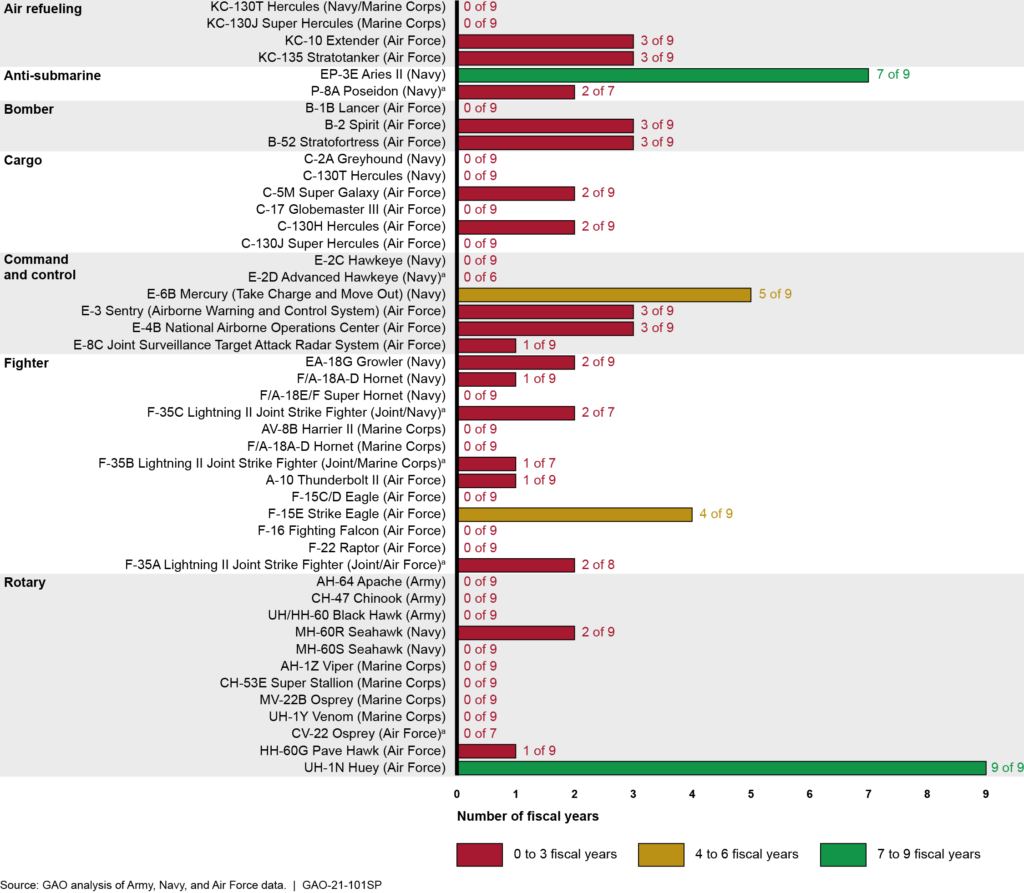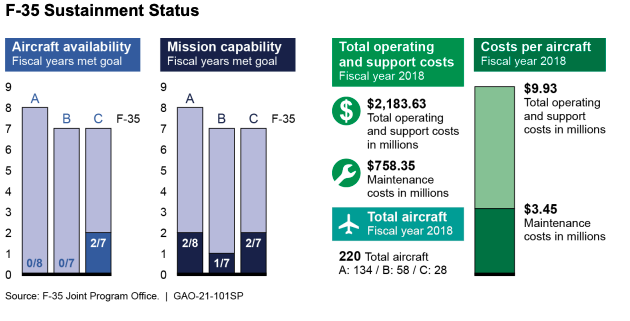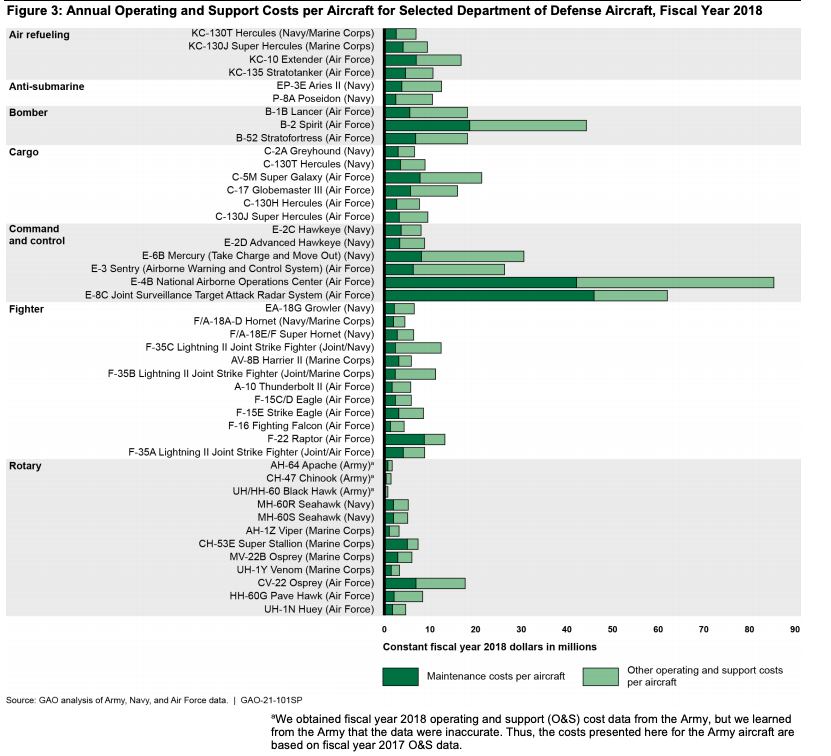
SOURCE: Government Accountability Office
WASHINGTON: Red ink bleeds ominously all over the page in a dire new report on the eroding readiness of America’s military aircraft, by the congressional Government Accountability Office. The report, released Thursday, says that of 46 types of aircraft:
- Some 24 aircraft – more than half – never met their readiness goals in the nine years from 2011 through 2019.
- Only two earned a “green” rating for meeting readiness goals seven of the last nine years: the Navy’s EP-3 Aries subhunting plane (7 of 9) and the Air Force’s UH-1N Huey helicopter (9 of 9, the only perfect score). But these are two rare and specialized types that make up a tiny portion of the overall air fleet.
- Two more aircraft earned “orange” ratings: the Navy’s E-6B Mercury command plane (met goals five years of 9) and the Air Force’s F-15 Eagle (four of nine), the only fighter to earn a passing grade.
- Every other aircraft – from the Army’s AH-64 Apache gunship to the Marine’s UH-1Y Venom – is marked in red. 18 of these “red” aircraft had met the readiness goals in one, two, or at most three of the nine years. The other 24 had never met the readiness goals in the entire nine-year period, 2011-2019.
What were those goals? In most cases, we don’t know, because specific readiness numbers were redacted from the unclassified version of the report released to the public Thursday. We do know that in September 2018, then-Defense Secretary Jim Mattis set a target of 80 percent “mission capable” rates for fighter aircraft, a goal he wanted met by the end of 2019. That has not been met.
“We found that none of these aircraft had achieved the 80 percent mission capable goal,” GAO said – not the fighters, not anything else. What’s worse, the report continues, “Average mission capable rates for the selected Air Force, Navy, and Marine Corps aircraft have fallen since fiscal year 2011, while average mission capable rates for the selected Army aircraft have slightly risen.” (Emphasis ours).

SOURCE: Government Accountability Office
The best-publicized problems have been those of the tri-service F-35 Joint Strike Fighter, which only recently entered service in significant numbers and is struggling with chronic shortages of spare parts. The F-35’s progress has been distinctly uneven, GAO said: “While the average mission capable rate for the F-35 Lightning II Joint Strike Fighter showed an increase from fiscal year 2012 through fiscal year 2019, it trended downward from fiscal year 2015 through fiscal year 2018, before improving slightly in fiscal year 2019.”
The F-35 is not alone in having supplier problems. Even longer-serving aircraft fleets with well-established supply chains and support systems are struggling. The Navy’s F/A-18E/F Super Hornet fighter and its electronic warfare variant, the EA-18G Growler, are both suffering shortages of spare parts, in some cases because suppliers have stopped making them or gone out of business altogether since these aircraft entered service in 1999 and 2009 respectively.
Some older planes are faring far worse. In a chart comparing the average annual cost to operate aircraft of different types, what leaps off the page is the staggering expense of two Air Force command-and-control aircraft whose high-tech electronics are packed into old, converted Boeing airliners. The Air Force’s small fleet of E-8C JSTARS – just 16 aircraft, all converted second-hand 707s – entered service in 1991 and cost $107 million per plane per year to operate. The even tinier force of E-4Bs, four 747s modified to be flying command posts in case of nuclear war, has been in service since 1985 and now costs over $127 million per plane per year. That beats even the notoriously maintenance-intensive B-2 stealth bomber and dwarfs almost every other aircraft listed.

SOURCE: Government Accountability Office
Air Force picks Anduril, General Atomics for next round of CCA work
The two vendors emerged successful from an original pool of five and are expected to carry their drone designs through a prototyping phase that will build and test aircraft.


























